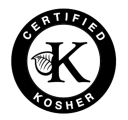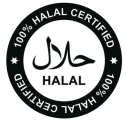No products in the cart.
End-to-end processing
Home » Processing » Our Process
driving innovation and excellence
MM
Marquis has a long track record of driving innovation and technology change within our processing facilities, as well as working with growers to improve their on-farm practices and increase productivity.
END TO END PROCESSING
The Marquis Group has been leading the way since 1983, developing most of the technology used throughout the industry. Our international reputation for quality is highly prized in our industry. We ensure our products have the longest possible shelf life by controlling storage and processing conditions.
- Globally celebrated for their unparalleled quality, the macadamias harvested by our farmers are complemented by our efficient processing, packaging, and distribution systems, guaranteeing unwavering excellence in every delivery.
- Vertically integrated from grower to customer, the 'farm-to-plate traceability' is underpinned by our BRC based food safety systems, innovative world class manufacturing facilities and processes.
- Focusing strongly on environmental sustainability, we work with growers to ensure the best on-farm practices are used.
- Our continuous drive to improve our facilities with industry-leading technology and processes means standardised and uniform products across all Marquis factories.

OUR 8 STEP PROCESS
Macadamias are a hard nut to crack, but more than worth the effort.
Our extensive processes ensure only the most delicious nuts are delivered to our customers.
STEP
1.

Step ONE
HARVESTING
The process starts on the farm with growers harvesting the nuts, removing the fibrous outer husk, and visually inspecting the nuts to remove any nuts with obvious defects.
STEP
2.

Step Two
Sampling
The nuts are received, and the weight delivered by the grower is recorded. Samples are taken and used to carefully assess the moisture content and quality of the nuts. This information is used to determine how much a grower is paid for their consignment.
STEP
3.

Step Three
Drying
After sampling, the nuts are transferred via a series of conveyors to a state-of-the-art drying facility. The heat used for drying comes from the burning of macadamia shell (a by-product in the processing operation).
To ensure nut quality is maintained, all drying steps are controlled by a computer system that allows for precise regulation of the temperature and humidity.
STEP
4.

Step Four
Cracking
After drying, the nuts are mechanically cracked. A series of processes (such as sizing graders, air separators called aspirators and electronic colour sorters) are used to separate the shell from the kernel.
At the end of the process, macadamia kernels free from shell are sent for manual inspection.
STEP
5.

Step Five
Sorting
The first stage of sorting utilises innovative colour sorters. During machine setup, trained operators take pictures of good and bad kernels using cameras in the machine. The operator then uses the machine software to define the colour and size of the individual defect.
In operation, a stream of macadamia kernel passes the cameras where each kernel is individually photographed. The computer quickly scans the image of each kernel checking for defect colours and the area that the defect colour covers. Defective nuts are shot with a small blast of compressed air to remove them from the good product. All of this happens while the kernel is moving at 2m/second.
Once the kernel passes through the colour sorter, it goes to the sorting area for manual inspection. The product that the colour sorter rejects is collected under the colour sorter and is further processed to recover usable kernel.
The manual inspection area is where specially trained sorting staff inspect the kernel a final time to remove any potential defects missed during the previous steps. From here, the kernel moves to a sizing tower. The sizing tower separates kernel into its different sizes (better known as ‘styles’).
STEP
6.

Step Six
Testing
The nuts are received, and the weight delivered by the grower is recorded. Samples are taken and used to carefully assess the moisture content and quality of the nuts. This information is used to determine how much a grower is paid for their consignment.
STEP
7.

Step Seven
Pasteurising
Product is passed through our state-of-the-art Napasol pasteurisation process, where it is treated using only steam and modified atmospheric conditions, to ensure food safety. This process has been independently validated to provide a 5-log reduction of salmonella.
STEP
8.

Step Eight
Packaging
All finished product is packed in vacuum-sealed, nitrogen-flushed foil pouches within cardboard cartons, ensuring the kernel stays as fresh as the day it was produced.
The cartons are checked for weight and have identifying barcode labels attached – these labels identify the product and provide full traceability for individual cartons of kernel all the way back to the farm. The cartons are stored in the warehouse, where the kernel is then dispatched to customers around the world.
CERTIFIED QUALITY




QUALITY GUARANTEED










